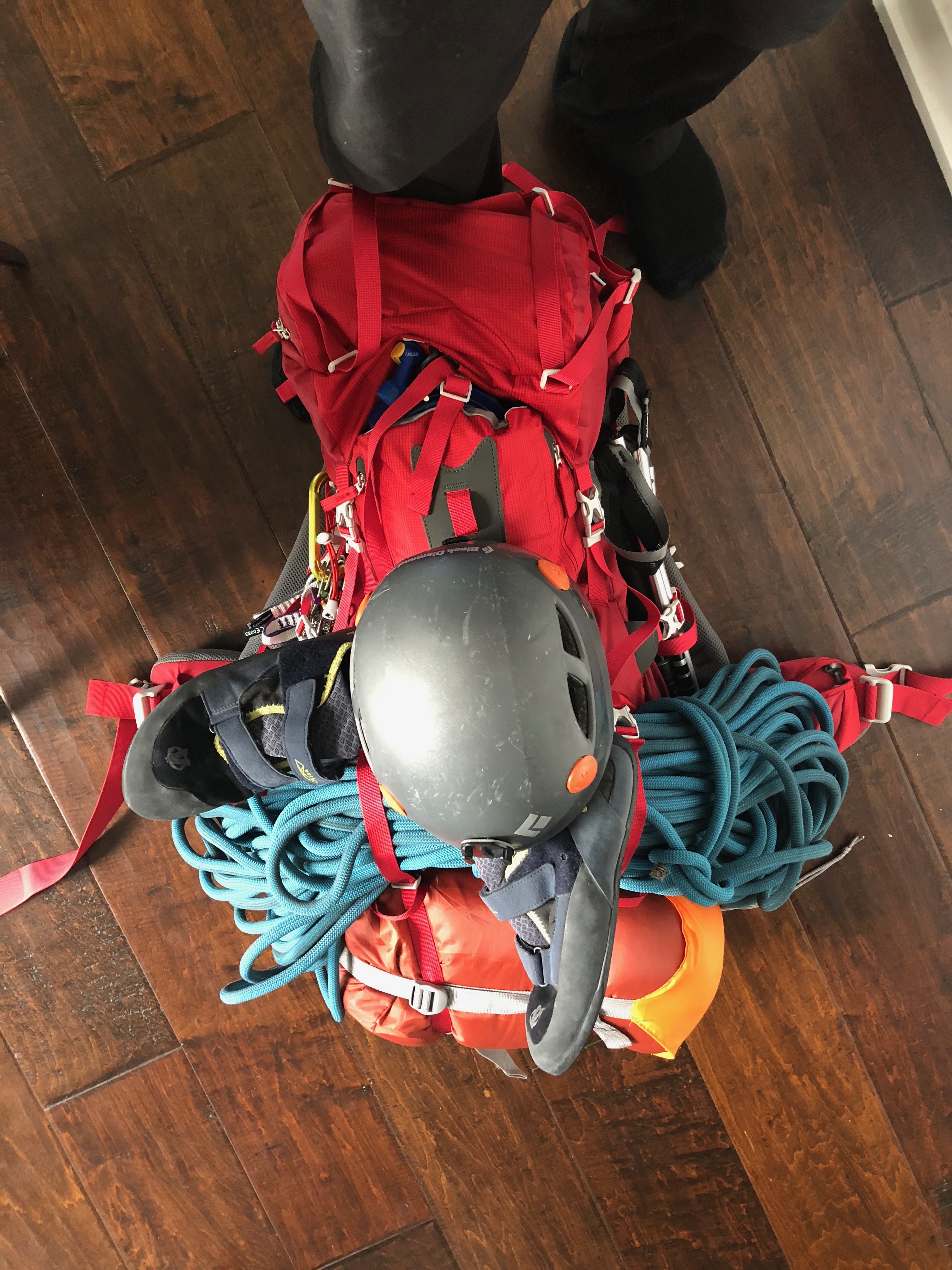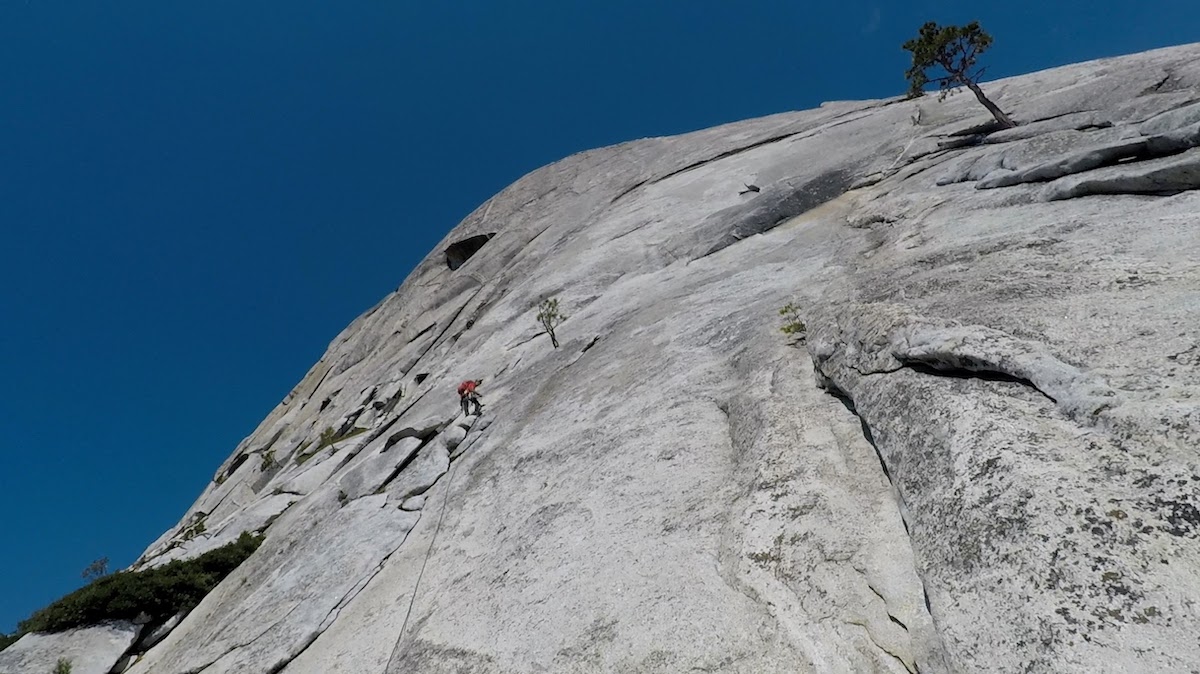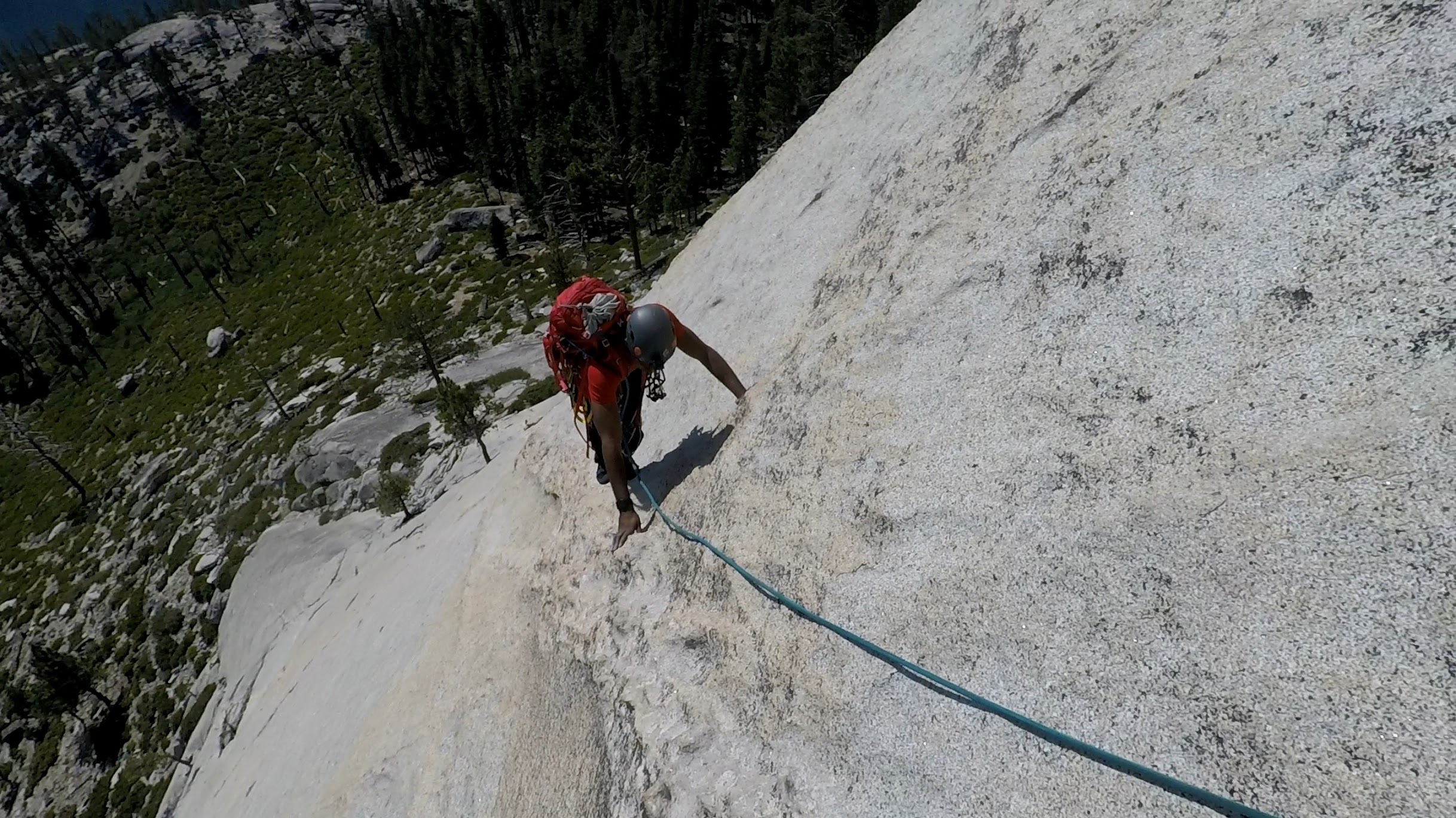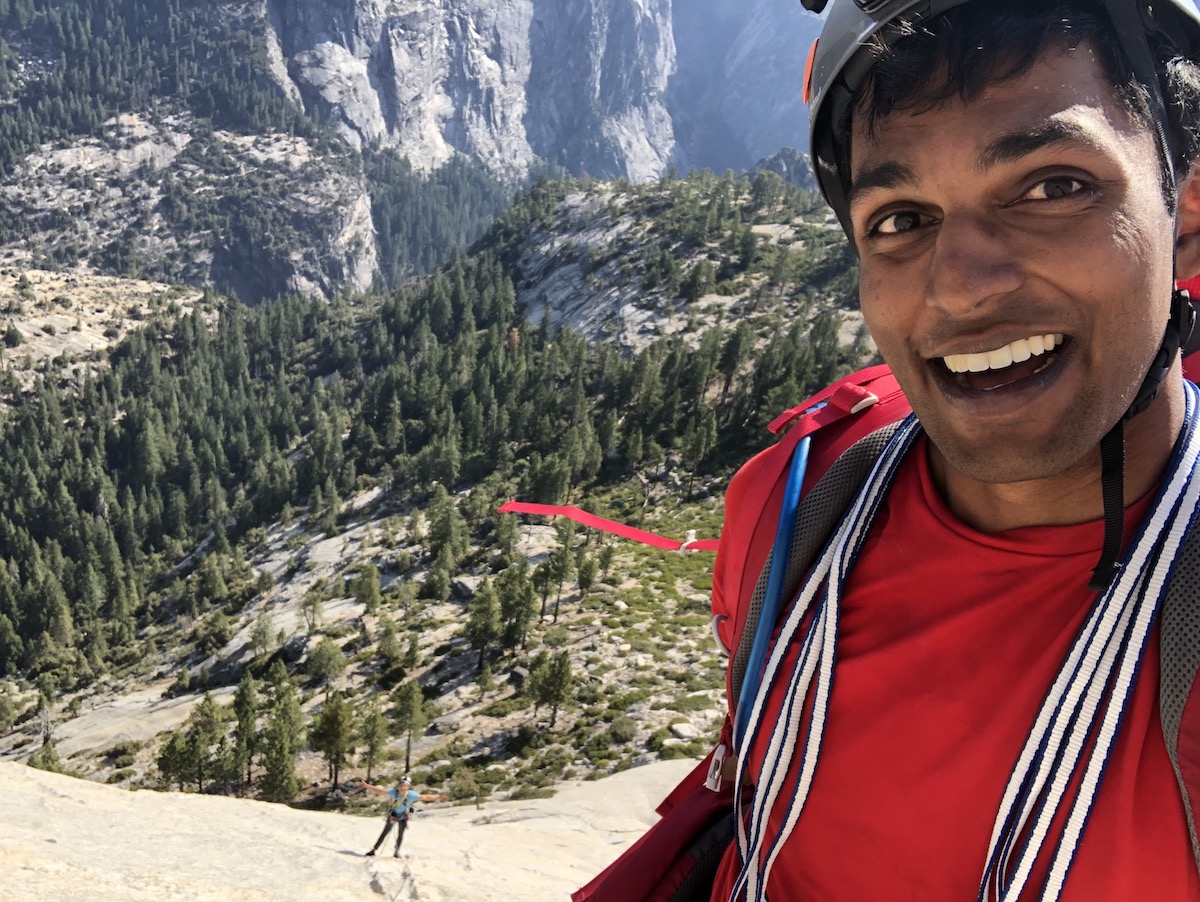Snake Dike
There is a classic 8-pitch climbing route leading to the top of Half Dome that goes up the opposite side of the dome. It is named Snake Dike after the numerous dikes snaking across the surface.
Two of the times that I climbed the route, me and my partner got lost on the approach, ran out of water, and had to climb at night. Both of these stories involve me throwing up at the peak and replenishing with a few desperate tugs at an empty water bladder.
One time I climbed the route with Avery Lieu - it was our first time climbing together outside, and we were introduced to each other days earlier at Mission Cliffs by my buddy Vinay (the brilliant CTO of Loom).

Vinay dropped us off in the Valley at midnight, then headed to an Airbnb (he was doing his own thing in the valley that trip). I had a shitty hiking backpack from Amazon while Avery had an Osprey - I bought one as soon as I got home because of how much I suffered for the next 25 miles. We got off a bit far from the optimal point, adding at least a mile to the approach.
We hiked up Vernal Falls by headlamp, then pulled out the hammocks and sleeping bags to try to get some rest. In the morning, we hiked all the way to Little Yosemite Valley campground, realized we had gone too far, stashed some weight (sleeping bags, hammocks, extra poundage) and filtered 3 liters of water each from the Merced river (how I wish we filtered more). We then proceeded to hike past Lost Lake and straight up the slabs to the base of the climb.
You can save yourself a lot of energy and from going free solo up sketchy slabs by closely following AllTrail's Snake Dike approach. If you can scramble efficiently, you can cut out some mileage by going off-trail between Liberty Cap and Mt. Broderick. But if you ever find yourself climbing straight up on sketchy slabs, you're off-route on the approach.
I led the odd number pitches and Avery did the even ones. As I would learn, pitch 1, 2, and 3 have some scary moments, while the remainder of the climb is a cruiser.

For the first pitch (rated 5.7), I suggest choosing going left to the tiny tree (closest to my red backpack in the picture above), slinging it for your first point of protection, then friction climbing up to meet the roof traverse.
I've heard stories of people taking whippers on the traditional roof traverse (starting from the tree on the top right corner of the above image), and subsequently bailing from the climb. Set yourself up for success on this pitch so you don't regret lugging your rope and gear all the way up here.

Avery led the second pitch and I followed. The pitch traverses to the right, and is much easier than it looks. It's rated 5.7 but I would put it at 5.6.
The third pitch involves a sketchy slab traverse, followed by easy climbing up dikes. We did all of these pitches with way too much weight on our backs, but even on a good day I would call it 5.7. The rest of the climb goes from 5.6 down to 5.3.

Runouts
There are not many points to protect yourself on this climb, which it what gives it the R rating on Mountain Project. You need to be prepared to climb precisely, especially on the easy dike climbing. There are points on this climb where falling would involve 20-40 meter slides down a slab, so I would not recommend this climb if your head game is not strong.
By the time we reached the Death Slabs (endless calf-burning class 3 slabs up to the summit) the sun was setting and we had to make haste. If you want to really enjoy this route, camp at the top of Nevada Falls, then get an early start so you can reach the summit while the sun is high.


We ran out of water on the climb, and when we got to the summit I saw I had exactly 150 mL of water left, according to the lines on my bottle. Avery was tapped out. I was getting ready to drink it when suddenly I leaned over and threw up. Thankfully I saved that bit of water for afterwards, otherwise I would have had a horrible taste in my mouth for the descent. We clipped ourselves into the Half Dome steel cables and descended the hiker's route.
As we started descending the trail in pitch darkness without water, our mouths became so dry we could barely talk. We quickly lost the trail and began hiking downhill through the woods, listening for any sign of water. We were both so tired that we began imagining sounds and hallucinating animals out of the shadows thrown by our headlamps. Finally, I hear the trickle of water, and we rush toward the sound to find a shitty stream barely a couple inches deep. We finally quench our thirst, and I spent 20 minutes filtering water into our bags while Avery took a nap on a log.
Replenished, we continued hiking downhill until we found the Little Yosemite campground at 3 am, pulled out the camping gear we stashed there 20 hours ago, and managed to get 3 hours of sleep in the freezing cold. We then trudged our way downhill to Curry village just in time to meet up with Vinay and share our crazy adventure over food and beers.
Climbing Snake Dike with Doctor Dan
A year after that incident, I climbed the route with Dan Qazi, one of the coolest guys I know and a brilliant doctor at UCSF. I've been introducing Dan to the world of climbing, and it was going to be his first multi-pitch route. It was about a year after I climbed the route with Avery, and I was hoping I could do it faster and smarter than last time.

Dan and I met up in SF Friday night, drove to Yosemite and barely slept a couple hours before starting our hike early in the morning.
You can't go from sea level to altitude and expect to perform at the same level. I now start every Yosemite trip with a chill acclimation day - drive to Glacier Point, boulder somewhere in the Valley, practice on Swan slab, etc.
We took the optimal route between Liberty Cap and Mt. Broderick but still got lost toward the end of the approach, only reaching the base in the late afternoon. Dan was still psyched to climb, especially after how hard we worked to get there. I would be leading all 8 pitches and pretty low energy from the hike, but after a Red Bull and 30 minute nap I was ready to go.
The video above has the first two pitches - I still need to compile the GoPro footage from the rest of the climb. By the time we got onto the easy part of the climb, the sun was going down. We switched on our headlamps and climbed the rest of the way in pitch darkness.

We got to the top of the climb and started putting away gear before the final push up the Death Slabs. We were both tired and disoriented, and in the confusion, Dan dropped all his water. We both stared at each other in silence as it bounced down the 8 pitches we had just climbed up. We now had a shared 1.5 liter water supply that would need to last us for many miles.
We got to the top of Half Dome past midnight, and both of us collapsed on the ground. You're not supposed to sleep on top of Half Dome, but we were so tired that it would have been much more dangerous to try descending the cables. We found this little shelter from the wind right by the ledge where all the tourists take pictures, and settled in for another restless night.
We were woken in the morning by hikers completing their ascent of the cables. People saw our ropes and gear, and some kind people from Modesto gave us their extra water! We talked to a bunch of people on the summit while staying socially distanced, enjoyed the summit views, and began our descent late in the morning.
